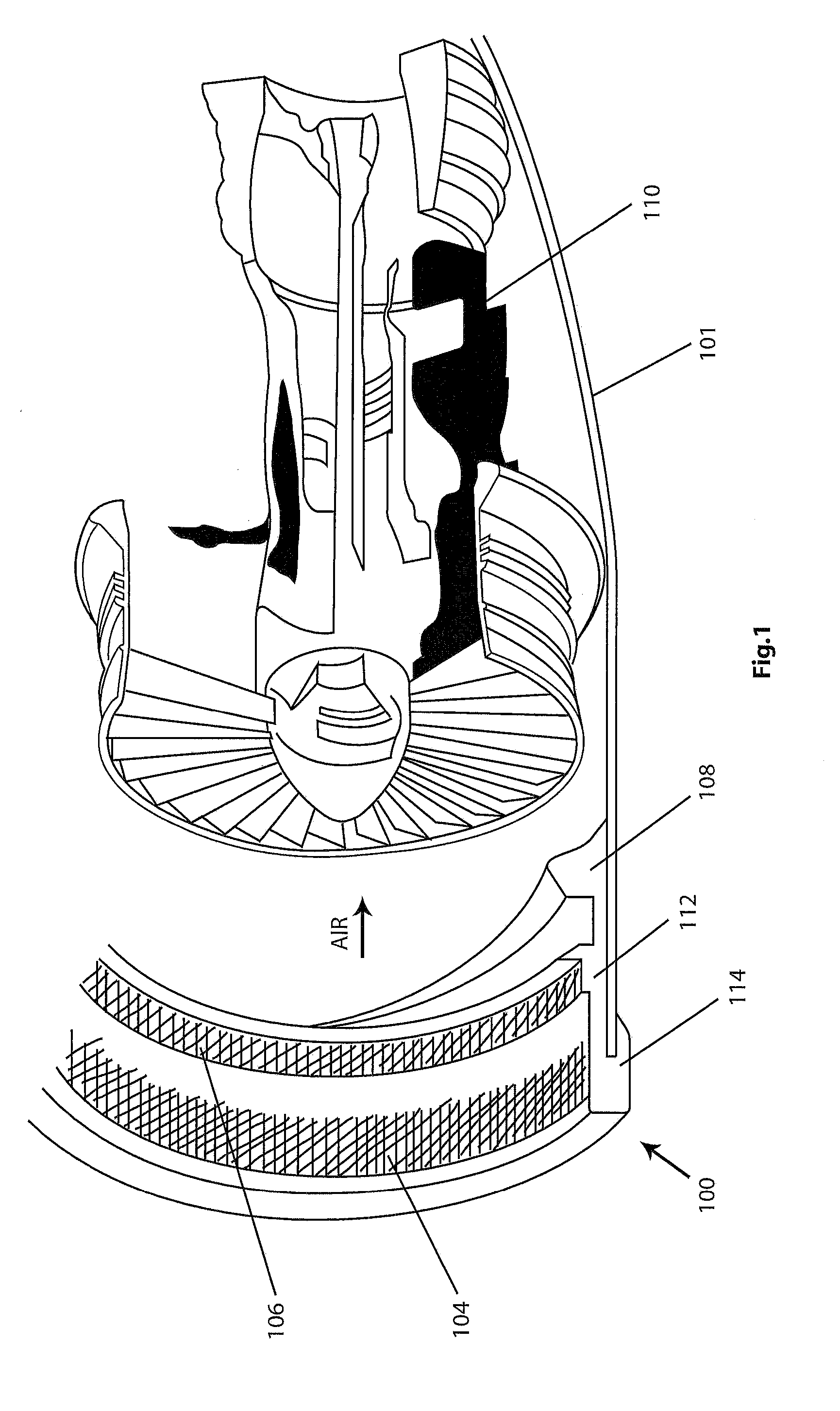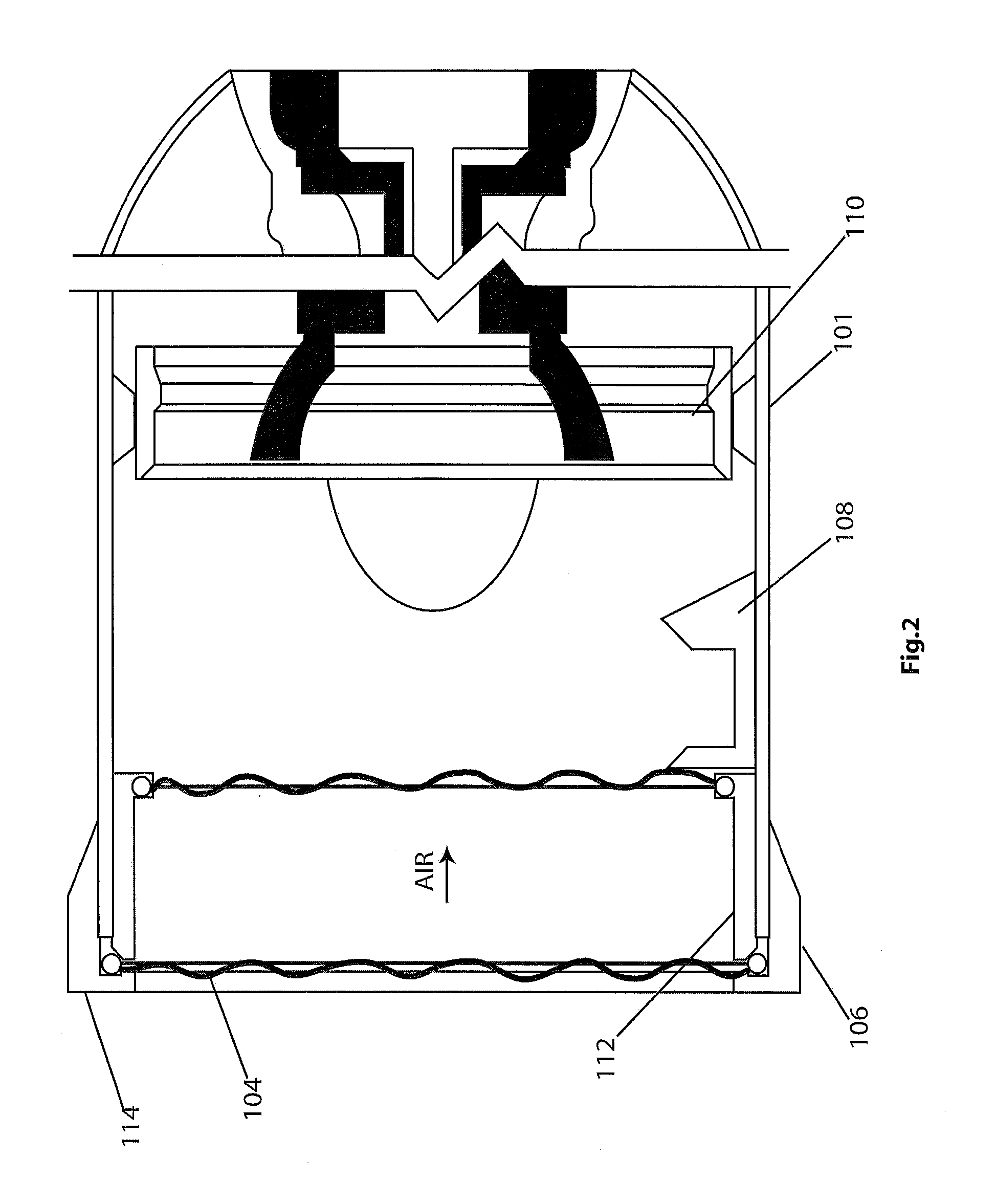Aircraft engine protection device
- Summary
- Abstract
- Description
- Claims
- Application Information
AI Technical Summary
Benefits of technology
Problems solved by technology
Method used
Image
Examples
Embodiment Construction
[0021]FIGS. 1 and 2 show a partially broken and a cross sectional view, respectively, of a jet engine equipped with an embodiment of an engine protection device according to the present invention. In FIGS. 1 and 2 the engine protection device (100), is depicted as being fitted to an aircraft engine nacelle 101. The nacelle is a cover housing (separate from the fuselage) that holds the engine on an aircraft. The engine protection device has a first deflection web (104), a second deflection web (106) and capture basket device (108). The capture or arc basket 108 is fitted inside the engine nacelle (101) and rests upon the interior surface of the nacelle at a position in front of the engine turbine (110). The capture basket 108 has a curved profile (shown in FIG. 1), which extends along a portion of the circumference of the nacelle. The capture basket (108) has a high wall (206) and a low wall (204) (FIGS. 2 and 3) that cooperate to retain foreign bodies not deflected by the first and ...
PUM
 Login to View More
Login to View More Abstract
Description
Claims
Application Information
 Login to View More
Login to View More - R&D
- Intellectual Property
- Life Sciences
- Materials
- Tech Scout
- Unparalleled Data Quality
- Higher Quality Content
- 60% Fewer Hallucinations
Browse by: Latest US Patents, China's latest patents, Technical Efficacy Thesaurus, Application Domain, Technology Topic, Popular Technical Reports.
© 2025 PatSnap. All rights reserved.Legal|Privacy policy|Modern Slavery Act Transparency Statement|Sitemap|About US| Contact US: help@patsnap.com



